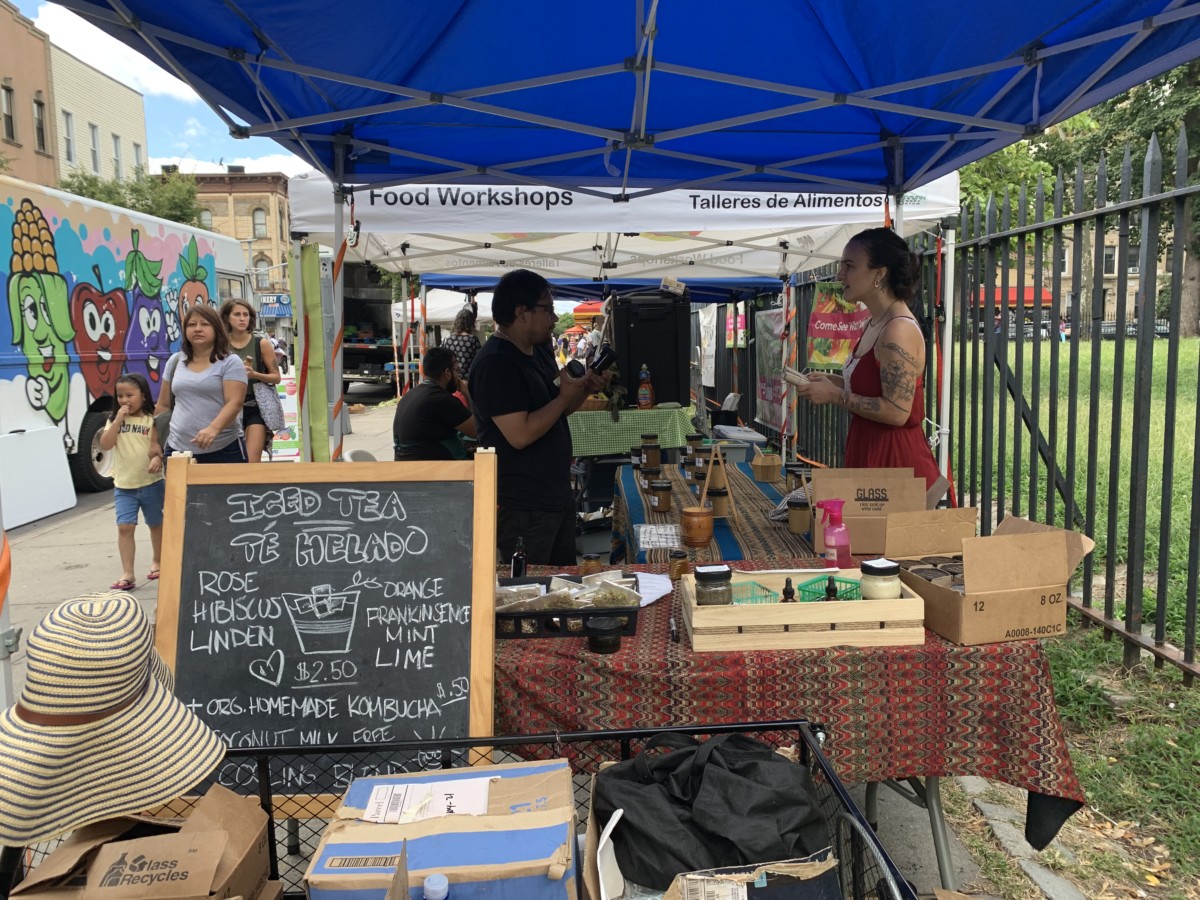On a muggy Saturday afternoon, the sounds of live music and children screeching with glee permeate Maria Hernandez Park, named to memorialize a Bushwick community leader who was shot after advocating against drug dealers in the late 1980’s, when the area was plagued by violence.
In 2019, that Bushwick feels distant. Just outside the park, tables filled with fresh produce, artisan spirits, and homemade honey line Knickerbocker Ave. Families and young professionals, dressed down, hover around the colorful goods.
Ava Zarich smoothes out her bright red sundress and hurriedly rearranges mason jars filled with homemade nut butter and small vials of herbal wellness products. Her station stands among a collection of folding tables, which span about a block and make up the neighborhood farmer’s market.
“It’s not super professional,” says Zarich. “That’s why I fit in here.”
A few tables down, a New York City Department of Health representative offers “health bucks,” which can be used to purchase produce, to a family of four participating in her healthy eating demonstration. She points to several bags of sugar lying on the table and asks the young boy in front of her to guess how much is in one can of soda. A translator standing nearby echoes the question in Spanish. The young boy looks up at his mother and waits for a reassuring nod before timidly pointing to one of the bags.
A couple of stands over, 28-year-old Juan Pavia sells a bunch of radishes to a middle-aged woman. He and his parents have been selling produce from their family’s farm at this market since 2007. He says his father still uses the same agricultural practices he did when he learned to farm in Mexico.
“We make three stops: my place in Staten Island, the farm in New Jersey, then here,” said Pavia. “Every year it picks up. Every year new faces show up.”
The RiseBoro Community Partnership, a nonprofit offering community services, hosts this farmer’s market every Saturday from 9 a.m. to 4 p.m. The group strives to offer affordable, healthy food to the community and provide business opportunities to local vendors and farmers.
The RiseBoro Farmer’s Market coordinator, Camille Camay, says this is part of an effort to help some of the neighborhood’s most vulnerable residents thrive. The produce is affordable, unlike some of the organic options that have been popping up around the neighborhood with hefty price tags attached. Organizers also encourage the use of public nutrition assistance benefits.
With this modest farmer’s market in the middle of a crowded sidewalk, the community is claiming space for a group of Bushwick natives who are finding their stability increasingly threatened with each new high-rise and artisan coffee shop.
Around the corner, a tall man dressed in a plaid shirt and sneakers leads a group of seven people who appear to be tourists up Troutman Ave., on a tour of Bushwick’s trademark graffiti walls. In recent years, the neighborhood has seen a wave of tourism from Europe and beyond, earning it a spot on multiple “trendiest cities” lists. Private graffiti tours can run around $250 per hour.
“Next stop,” the guide announces with authority, waving in his hand in a sweeping motion toward the paint-splashed wall behind him. Seven iPhones shoot into the air in unison.
Up the road, Cobra Club employee Olivia Shank fields mid-day orders in a dimly lit establishment, where the caffeine craving meets the happy hour hankering—one 16-ounce, iced, oat milk cappuccino; one Lagunitas Little Sumpin’ Sumpin’ Ale. The regulars at the bar scoff at the graffiti tour outside and wax nostalgic about an older, grittier Bushwick.
It’s late summer in Bushwick, and in more ways than one, the seasons are changing.


Leave a Reply